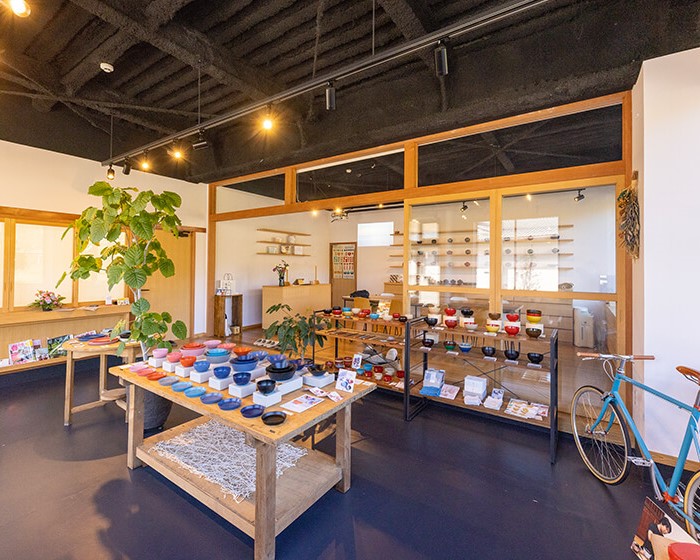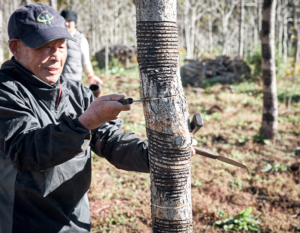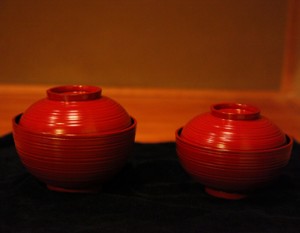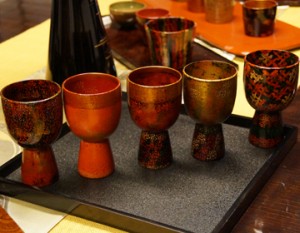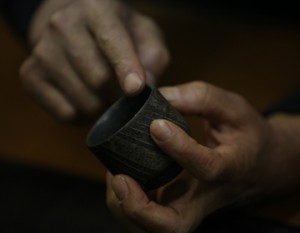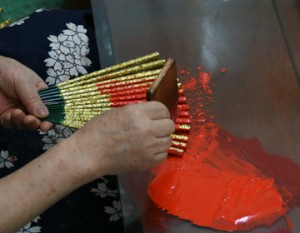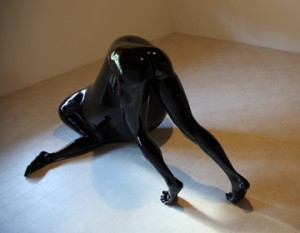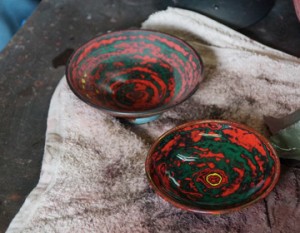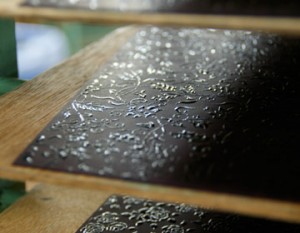The Kawada district of Sabae City, Fukui Prefecture, is said to be the oldest lacquerware production area in Japan.
The long-established company, Ururindo, has been in this area for eight generations since the Edo period.
While carrying on the traditions, the company develops and offers products that meet the needs of modern life with the idea of “making lacquerware more easily accessible for everyday use.
The company proposes dishes that are a part of daily life, such as dishwasher-safe, hand-lacquered lacquerware.
Echizen lacquerware, produced in the Kawada district in the eastern part of Sabae City, located near the center of Fukui Prefecture, has long held an approximately 80% share of the domestic commercial lacquerware market. However, the industry has been shrinking due to the diversification of eating habits and the spread of inexpensive plastic tableware. Against this backdrop, Lacquyurindo branded itself and produced lacquerware suited to the modern age. The company’s colorful and functional dishwasher-safe dishes have attracted attention from around the world, and have rewritten the history of lacquerware.
Kawada area specializes in lacquerware for commercial use.
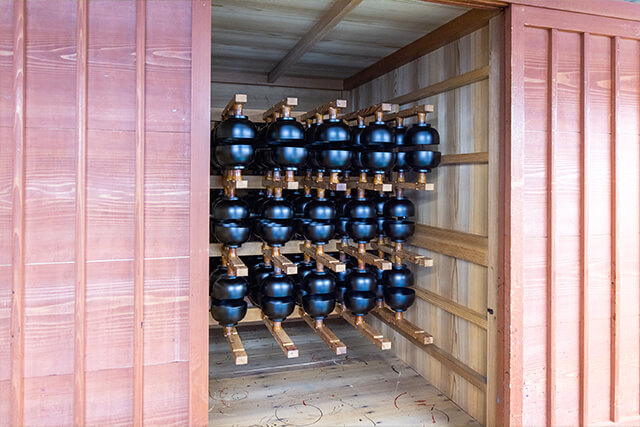
Echizen lacquerware was designated by the national government as a traditional craft in 1975. The Kawada district is located in the center of Fukui Prefecture, in the eastern part of Sabae City, known for its eyeglasses, and in a quiet basin separated by a mountain from the Ichijodani Asakura clan ruins, which are famous as a historical war site. The entire region is involved in the production of lacquerware, and each of the craftsmen involved in the process of making lacquerware, including the woodworker, the basemaker, the lacquerer, and the maki-e artist, have their own workshops where they work hard at their specialized fields of study.
At its peak, the company accounted for approximately 80% of the domestic market share of commercial lacquerware for inns and restaurants.
According to one theory, Kawada lacquerware has a history of more than 1,500 years. It is said that the history of Kawawada lacquerware dates back to the re-painting of the broken crown of Emperor Keita, and since then, the company has grown to account for about 80% of the domestic share of commercial lacquerware used at inns and restaurants.
A professional group of “lacquer scrapers” was also born, who went to work throughout the country to collect lacquer solution, and they influenced the lacquer industry in various regions by popularizing iron knives for scratching lacquer. In Kawawada, not only individual craftsmen, but also companies that handle all aspects of the lacquer industry have grown. One of these companies, Ururindo, is a long-established lacquerware manufacturer that has been in business for more than 200 years, since 1793.
Times are changing, and areas of expertise are blocking the future.
Kawawada, a lacquerware production center, specializes in making-to-order products that respond flexibly to clients’ requirements. The company captured the commercial lacquerware market mainly for inns and restaurants, thanks to its durability to withstand hard use, the price range demanded by clients, and the practicality of its ability to mass produce. After the end of the bubble economy, however, needs for lacquerware declined sharply due to competition from inexpensive overseas products, the rise of plastic products, changes in eating habits, and the diversification of tableware. The industry was shrinking day by day, and the production centers were faced with the problem.
The heirs of long-established businesses focused on the high hurdles that only a production center can overcome.
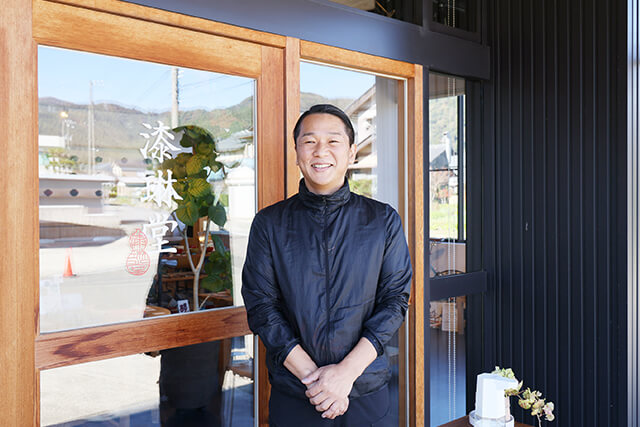
Lacquerware production and sales have been run by a family business centered on the lacquerware shop business, and “Ururindo” was one of the companies that were troubled by sluggish sales. However, while Kawada was struggling to keep up with the rapid changes of the times, Toru Uchida, who was in his early 20s, decided to take over the family business.
In his youth, he was obsessed with baseball and went on to study physical education at a university outside of the prefecture. People around him had high expectations for his large hands that firmly grasped the ball, which were suitable for a painter. Knowing the state of the industry, he could not make up his mind to take over the family business even before graduating from college, but lacquerware was on his mind during his job search. When I visited an interior design company, I wondered if my family’s lacquerware could be displayed there,” he said.
Determination to “take on the responsibility of the production area
I was aware of the nature of the problems in the production area, but I was also aware that it was difficult to sell lacquerware. As he realized the true nature of the problems facing the production area, Mr. Uchida decided to live in the world of lacquerware. When he returned to his hometown as a student, he saw his grandfather, father, and family working with sincerity. He decided that if he was going to take over the family business someday, he wanted to use the time he spent working at other companies and taking side trips to train in the art of lacquering. As soon as he returned home, he began learning the techniques of lacquering from his grandfather and father.
Launching new brands one after another to repaint the traditional beauty of Echizen lacquerware
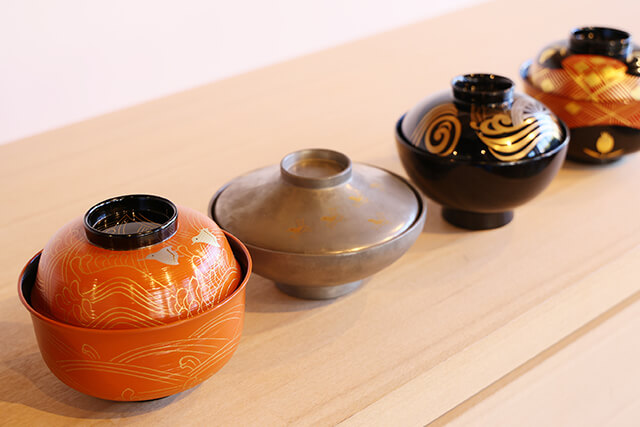
Although he learned the techniques handed down in his family from generation to generation and started his career as a lacquerware master, the industry itself lacked vigor, and company sales were declining. The theory behind commercial-use lacquerware is that it should be made in specific sizes for specific purposes, such as for soup bowls, simmered dish bowls, and stopper bowls, and that it should be decorated with seasonal and glittering maki-e lacquerware. The bowls were not sold to the general public because they were a little too flashy and difficult to use for home use. In the course of receiving a large number of orders, he came to believe that if he only handled one of the processes of making lacquerware as a craftsman, he would not be able to understand the needs and satisfaction of the people who use his lacquerware and would not be able to convey the ingenuity and feeling he had put into his work.
What kind of vessels are needed by ordinary users in the world today? Without determining this, there is no way for a production center to make a living. Mr. Uchida began to produce a brand of lacquerware for individuals under the name of Ururindo, and he personally participated in exhibitions and sales at department stores, which was rare for a lacquerware production center at that time.
Lacquerware itself is used as interior decoration. AISOMO COSOMO
The next step Mr. Uchida took was to entrust the production of his own products to a professional. He asked Hirotoshi Maruwaka, a product producer at Maruwakaya, who was known for proposing a new kind of manufacturing by connecting traditional Japanese craftsmanship and the latest technology. The series, which added a playful touch of color to the concept of “familiarity,” made its debut as aisomo cosomo, a line of interior goods. He immediately had them placed in the stores of a large museum outside of the prefecture, but at first they were not even looked at. After a year, however, the series was exhibited at the “Dainippon Ichiba” (Dai Nippon Ichiba), an event organized by Nakagawa Masashichi Shoten, a company that has been developing and manufacturing products based on the vision of “revitalizing traditional Japanese crafts,” and was picked up by major department stores and national-class boutiques one after another.
While daring to move away from the image of luxury that lacquerware has, the quality and traditional techniques of lacquerware can still be felt, making it easy for anyone to pick up and use. Blue, red, yellow. The colorful yet deep colors that somehow fit in with Japan are used in the bi-colors. The shapes and sizes are also carefully selected, including soup bowls, rice bowls, small bowls, chopsticks, trays, and festive plates. The price range is from 2,000 yen to 9,000 yen, making the products accessible to the younger generation. As a long-established company that has focused on lacquering, we were able to create a variety of colors. The atmosphere of being able to use them as interior decorations may have appealed to people with a high level of sensitivity.
Although it takes a large number to develop a brand nationwide, the fact that Ururindo originally had a system in place for medium-volume production led to a winning formula. The company was able to achieve mass production while maintaining high quality. The new lacquerware caught the attention of many people, and the company was invited to participate in exhibitions in Germany, Taiwan, and other foreign countries. In 2012, Mr. Uchida became the youngest person in Fukui Prefecture to be certified as a traditional craftsman at the age of 35.
Dishwasher-safe and easy to clean [RIN&CO.
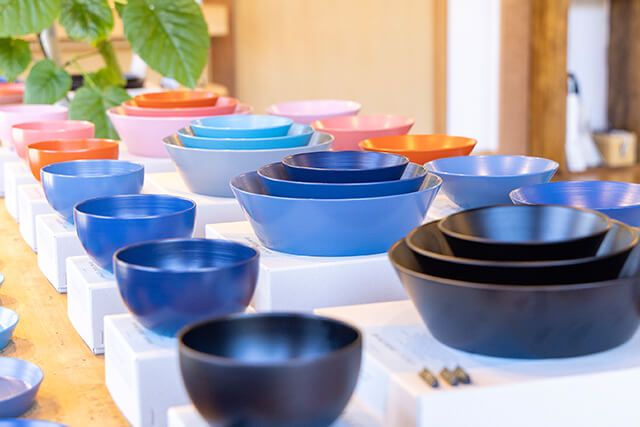
What further surprised the industry was Mr. Uchida’s announcement in 2020 of “RIN&CO.,” a line of lacquerware that is dishwasher-safe. Lacquer is the world’s finest natural paint. It is said that lacquer becomes hardest 100 years after it is applied. I thought that today’s lacquerware does not bring out its full potential. Usually, the lacquer solution purchased from wholesalers is mixed with chemicals to make it easier to apply. Mr. Uchida researched the blending and processing of lacquer solution in cooperation with Fukui Prefecture and the University of Fukui, and developed “Echizen kata urushi,” a hard coating film that can withstand dishwashing machines. The company also reviewed the wooden base and improved it to make it sturdier and more resistant to cracks and distortion by applying the technique used for commercial lacquerware, in which resin is soaked into wood powder and molded into the surface.
Using the colors we see in our daily lives as vessels

Again, the coloring of the vessels was a particular concern. Hundreds of color patterns were created based on the weather and climate of Hokuriku, and Mr. Manabu Mizuno, known for his “Kumamon” design, was asked to supervise the project. The color is almost gray-blue, which represents the winter sky of Fukui. Navy gray, reminiscent of the rough waves of the Sea of Japan. The light red gradation that colors the horizon at dusk. My father was very opposed to the idea. Cooking experts were very critical of the cold colors, saying that they would decrease one’s appetite,” says Uchida. But when I opened the lid, it was very well received,” says Uchida. The coloring makes you want to place them not only for meals but also in your daily life, and the scenery of the dishes tells us that people’s lives are seasonal. Lacquerware has excellent heat retention properties, so if you serve rice on it, it will not easily get cold and you can enjoy the freshly cooked hotness of the rice.
The “Hakeme technique,” in which the brush marks are left on the surface of the rice, was adopted as a unique coating technique. This technique requires a high level of skill because the paint cannot be repainted, but it creates a pattern that is unique in the world. Scratches are not noticeable. Only the black vessels use the “Shin-nuri-technique,” which leaves no brushstrokes, for a luxurious finish. The matte texture of each piece has been achieved by eliminating the luster. Modern houses are brightly lit, with lighting reaching every corner. If you use glossy dishes, they would look too shiny. The slightly smaller size is calculated to make people want to buy the vessels with the impulse of “kawaii” (cute).
To create a corporate environment where young people want to work.
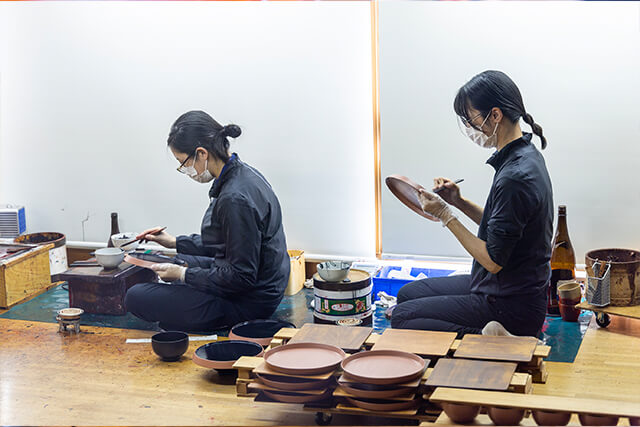
From a cozy family-run business, Ururindo has increased its staff while expanding production year by year, and now has 12 employees. The reason why there are so many young people is because of the company’s desire to nurture young people who will remain in the production area. Rimindo says, “We actively accept not only art college graduates and those who have studied crafts, but also staff who want to become artisans from the ground up. When the ages of the makers and users are close, I think we can better understand what is needed to make traditional lacquerware resonate with young people,” he says.
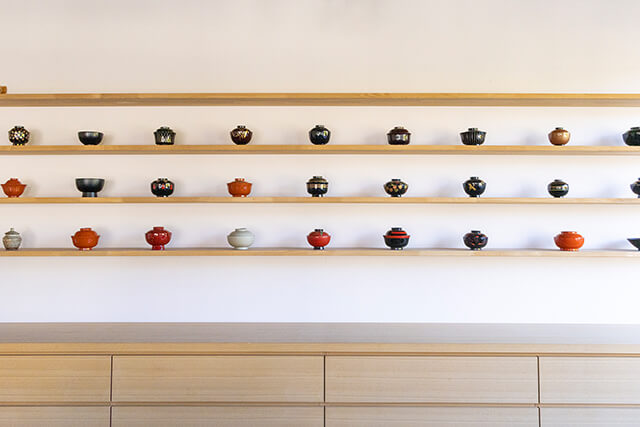
In 2021, the company also launched a new line of lacquerware with an updated traditional form that is dishwasher-safe. 100% natural lacquerware can be expected to have antibacterial properties and can be repaired by kintsugi, a process that involves metal splicing. The luxurious, traditional lacquerware is also in high demand as gifts. Lacquer trees grow wild in many Asian countries, but in none of them is lacquerware an industry at all. With crafts in decline worldwide, Ururindo has opened a new avenue of activity for traditional crafts. Naturally, many similar products are being made, but Mr. Uchida is confident that this is proof of the success of his own brand. He says, “I would rather be the imitator than the imitated. Together with the next generation of craftspeople, Uchida will continue to rewrite the history of lacquerware by discovering needs that meet new values.
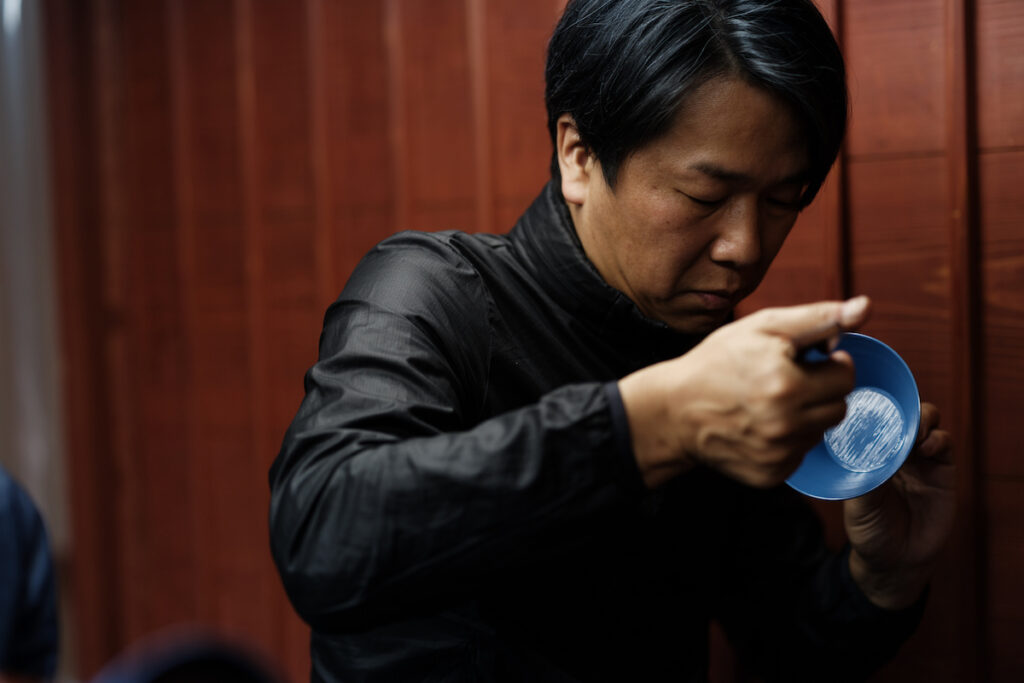
The dishwasher-safe lacquerware born from customer feedback is made of Echizen hard lacquer, a 100% natural lacquer coating developed through an industry-academia-government collaboration with Fukui Prefecture and the University of Fukui. We hope you will become familiar with this lacquerware for daily use.



